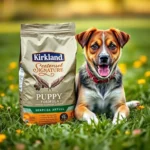
Introduction
Proper dog nutrition is crucial for the overall health and well-being of our furry friends. Just like humans, dogs require a balanced diet filled with essential nutrients to thrive. Among the various components of a dog’s diet, treats play a significant role, especially when it comes to training and maintaining a strong bond between pet and owner. In this article, we will delve into the best dog biscuits available on the market, as well as homemade options, helping pet owners make informed choices about their pets’ nutrition.
Understanding Dog Nutrition
Basic Nutritional Requirements
Dogs need a variety of essential nutrients to maintain their health. The primary components of a dog’s diet include:
- Proteins: Vital for growth, muscle development, and overall health.
- Fats: A source of energy and essential fatty acids that support skin and coat health.
- Carbohydrates: Provide energy and aid in digestion.
- Vitamins and Minerals: Support various bodily functions and contribute to the overall health of the dog.
A balanced diet tailored to a dog’s specific needs is crucial for maintaining its health and preventing nutritional deficiencies.
How Dog Nutrition Differs by Life Stage
Nutritional requirements change throughout a dog’s life. Here’s how:
- Puppies: Require higher protein and fat levels to support rapid growth and development.
- Adult Dogs: Need a balanced diet that maintains their health and weight.
- Senior Dogs: Often require lower calories and specific nutrients to support joint health and overall well-being.
- Pregnant or Nursing Dogs: Have increased nutritional needs and may require specialized diets to support both themselves and their puppies.
Understanding these needs helps pet owners provide the best care and nutrition for their dogs.
The Role of Treats in Dog Nutrition
Benefits of Treats
Treats serve multiple purposes in a dog’s diet:
- Training Aid: Treats can be used as rewards during training, reinforcing positive behavior.
- Bonding: Sharing treats can strengthen the bond between the dog and its owner.
- Nutritional Supplementation: Some treats can provide additional nutrients that may be lacking in regular meals.
When to Use Treats
Treats should be used strategically. Here are some common situations:
- Training: Use small biscuits as rewards during training sessions.
- Special Occasions: Celebrate your dog’s birthday or achievements with a special treat.
- Daily Rewards: Offer healthy treats occasionally as part of their routine.
It’s essential to monitor the frequency and portion sizes of treats to prevent obesity and ensure a balanced diet.
Characteristics of the Best Dog Biscuits
Ingredients to Look For
When searching for the best dog biscuits, always check the ingredient list. Look for:
- Whole Food Ingredients: Natural ingredients provide better nutrition than fillers.
- Natural Preservatives: Ingredients like vitamin E and rosemary extract are safer alternatives.
- Healthy Fats and Proteins: Ingredients such as chicken, fish, or flaxseed oil contribute to overall health.
Avoiding Harmful Ingredients
Certain ingredients can be harmful to dogs. Avoid biscuits containing:
- Common Allergens: Wheat, corn, and soy can trigger allergies in some dogs.
- Artificial Additives: Preservatives, colorings, and flavorings can be harmful and provide little nutritional value.
Being vigilant about ingredient choices can help prevent adverse health effects.
Nutritional Value and Caloric Content
Understanding the caloric density of treats is crucial. Here’s how to balance biscuits with regular meals:
- Caloric Density: Treats should not exceed 10% of your dog’s daily caloric intake.
- Balancing Meals: Adjust regular meal portions based on treat consumption to maintain a healthy weight.
Top Recommendations for the Best Dog Biscuits
Commercially Available Biscuits
Several brands stand out in the market for their quality and nutritional profiles. Here’s a brief overview:
- Blue Buffalo Wilderness: Grain-free and packed with protein, these biscuits are excellent for active dogs.
- Wellness CORE: High-protein, grain-free options that cater to dogs with dietary sensitivities.
- Merrick: Known for using real whole foods with no artificial ingredients, ideal for health-conscious pet owners.
These brands have varying nutritional profiles and ingredient quality, making it essential to choose based on your dog’s specific needs.
Homemade Dog Biscuit Recipes
Making your own biscuits can be a fun and healthy alternative. Here are some simple recipes:
Peanut Butter and Oat Biscuits
- Ingredients:
- 1 cup natural peanut butter (unsweetened)
- 1 cup oats
- 1/2 cup flour (whole wheat or oat flour)
-
1 egg
-
Instructions:
- Preheat your oven to 350°F (175°C).
- Mix all ingredients until combined.
- Roll out the dough and cut into shapes.
- Bake for 15-20 minutes until golden brown.
Pumpkin and Carrot Treats
- Ingredients:
- 1 cup canned pumpkin (unsweetened)
- 1 cup grated carrots
- 2 cups whole wheat flour
-
1 egg
-
Instructions:
- Preheat the oven to 350°F (175°C).
- Combine all ingredients in a bowl.
- Roll out and cut into shapes.
- Bake for 25-30 minutes until hard.
Chicken and Sweet Potato Bites
- Ingredients:
- 1 cup cooked chicken (shredded)
- 1 cup mashed sweet potato
-
1 cup oat flour
-
Instructions:
- Preheat your oven to 350°F (175°C).
- Mix all ingredients until combined.
- Shape into small bites and place on a baking sheet.
- Bake for 20-25 minutes.
These homemade treats ensure quality control and can be tailored to your dog’s taste preferences.
Special Dietary Needs
For dogs with specific health concerns, it’s essential to find suitable biscuits:
- Allergies or Sensitivities: Look for grain-free or limited ingredient options.
- Weight Management: Choose low-calorie treats or those designed for weight control.
- Dental Health: Some treats are specifically formulated to promote dental health, reducing plaque and tartar buildup.
Tips for Choosing the Right Dog Biscuits
Reading Labels Effectively
Understanding how to read labels can help you choose the right biscuits:
- Ingredient Lists: Look for whole ingredients listed first.
- Nutritional Information: Check for protein content, fat levels, and caloric density.
Consulting with a Veterinarian
Your veterinarian can provide valuable insights based on your dog’s health history and nutritional needs. Regular consultations can help tailor biscuit choices to your dog’s specific requirements and prevent potential health issues.
Conclusion
Quality dog biscuits play an essential role in a balanced diet. By understanding the nutritional needs of your dog and selecting the best dog biscuits, you can ensure your furry friend enjoys a healthy and fulfilling diet. Engage with your pet’s nutrition, research various options, and choose wisely to promote their health and happiness.
FAQs
How many biscuits can I give my dog?
The general guideline is to keep treats to less than 10% of your dog’s daily caloric intake. Always adjust based on your dog’s size, activity level, and overall health.
Are homemade biscuits better than store-bought?
Homemade biscuits can be healthier since you control the ingredients, but high-quality store-bought options can also be nutritious. It depends on your dog’s specific needs and your preferences.
Can biscuits replace a meal?
Dog biscuits should not replace a balanced meal. They are meant to be treats or supplements to a complete diet.
What are the signs of an allergic reaction to dog biscuits?
Signs of an allergic reaction can include itching, redness, digestive issues, or unusual behavior. If you suspect an allergy, consult your veterinarian promptly.









